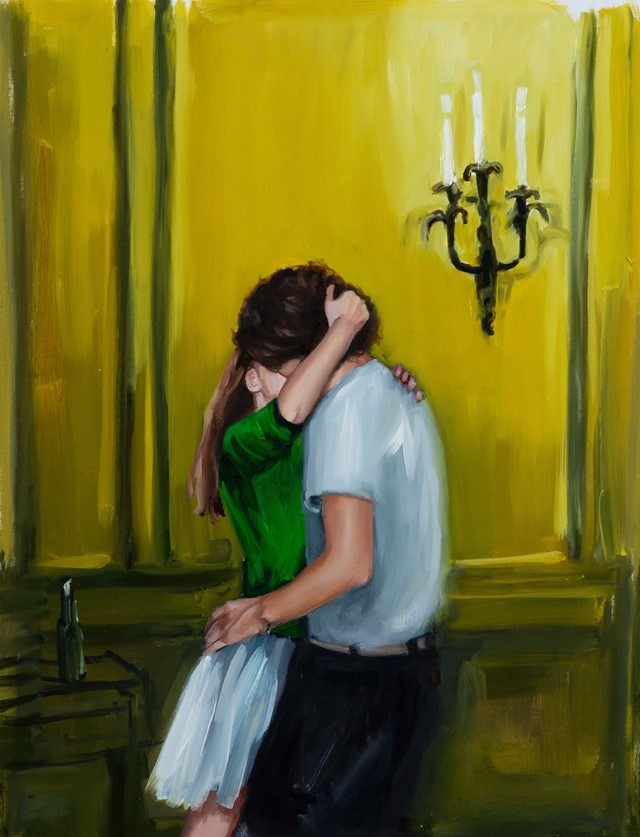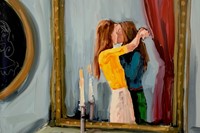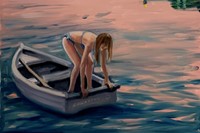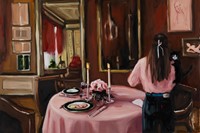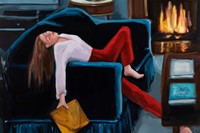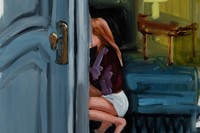The American artist conjures up vivid scenes of girlhood, taking inspiration from both Sofia Coppola and 19th-century society portraitist John Singer Sargent
“I was never about words, I was always about images,” says American artist Karyn Lyons. After studying journalism and taking a professional detour into advertising, she eventually committed to her childhood dream of painting. In her new exhibition, Under The Spell, on view at New York’s Turn Gallery until December 10, she revisits those younger days, focusing particularly on the awkwardness of her adolescence. “I am channelling my teenage memories: the good, the bad and the ugly; the heightened emotions and loneliness and vulnerability,” Lyons says. “During my adolescence, I felt cleaved through the heart … It has taken me all this time to look back on that girl with empathy.”
The youthful figures in her paintings, with their undone hair and slouchy postures, exude coming-of-age magnetism: girlish restlessness, roguish charm, tender sensitivity. They are all versions of Lyons herself: she describes them as “hybrids of me, my mother, who I wanted to look like.” Wrestling with self-perception is at the core of the painting exercise: “for many young girls, the women we see in magazines and in the media form our ideas of beauty and affect our self-esteem. When I was growing up, the ideal was the tawny blonde girl with flowing hair, blue eyes, big boobs, and erect nipples,” Lyons explains. “My parents had the Pirelli Calendar on our living room coffee table and I spent hours looking at those images … I always had sketchbooks growing up and I drew that figure over and over. I try to include her now in the paintings with a sense of humour, to attempt to smash that fantasy ideal for myself.”
In addition to calendar girls, classical artworks are also referenced within Lyons’ body of work, obliquely or faithfully: Ingres, Cézanne, Vuillard, Balthus. Miniature framed paintings or prints or statues are themselves swapped for cherished pop culture totems, be it a Bowie lightning bolt concert poster, Milton Glaser’s rainbow-haired silhouette of Bob Dylan or a still from Butch Cassidy and The Sundance Kid. “Our teenage bedroom walls are where we first start to display our aesthetic and cultural preferences,” Lyons says, alluding to every teen’s bedroom-as-gallery sanctum, “and start to sort out who we are and who we want to be.”
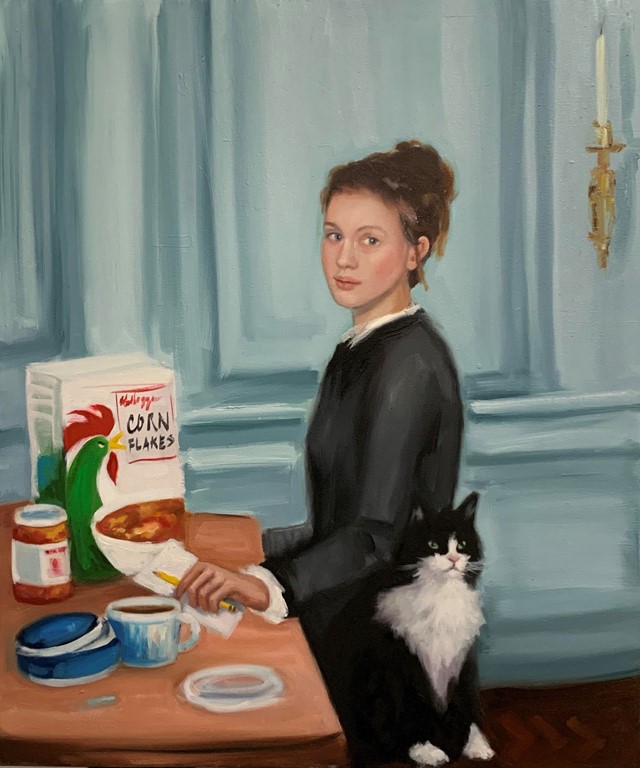
The painting titles further confirm the adolescent theme, as Lyons implements the high school tendency to classify people into facile identities and reductive rubrics: “The Pot Smoker”; "The Really Bad Babysitter,” “The Day Dreamer.” To christen her paintings, she often uses her brother as a sounding board, and it was him who came up with “Keg Party Casanova”. “At first I resisted that title because I wanted it to be about my girl,” Lyons says of the painting, which shows a young couple in a passionate embrace. “But then I realised that it really is about her … she sees the sexy boy at a party and spends the evening trying to get his attention.” The scenes of kissing are less about intimacy than the hormonal thrill of exploring libidinous impulses; the ache of wanting to accrue experience.
Lyons is not precious and embraces experimentation, wiping down the canvas as necessary if she doesn’t like her direction, letting both mistakes and happy accidents play out. While the distraction-free circumstances of the pandemic have made her especially prolific the past year – “I got into a flow and I am still riding it now” – she is also rigorous about maintaining a studio schedule of eight hour days, six days a week. Routine is her standby across the board, in fact. “I eat the same thing every day and wear the same thing every day,” she says, with a laugh. She leans on Instagram as a work tool – to post work-in-progress, to make digital mood boards – although her own images are of a world that precede social media, peppered with land lines, record players, and wooden tennis racquets.
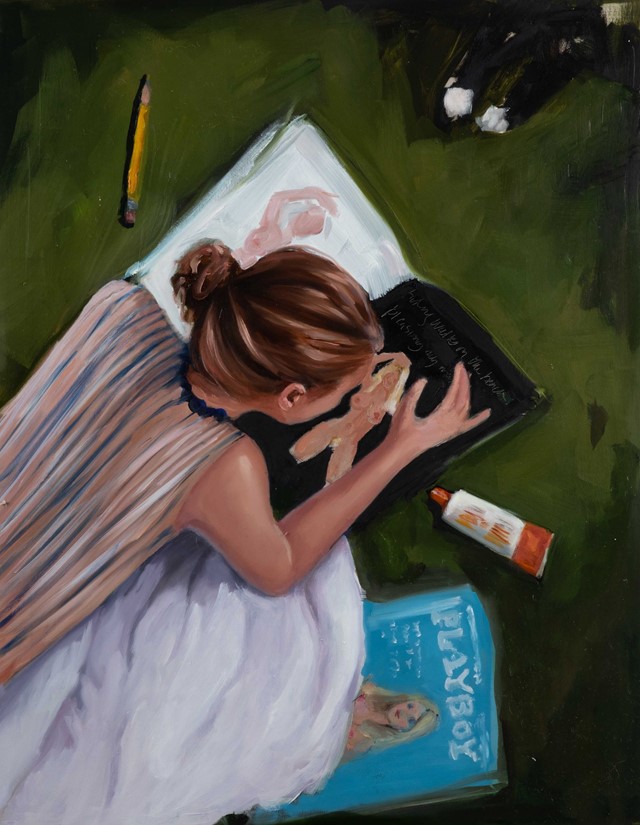
These signifiers join her attentiveness to the sartorial. She conjures a feeling of prep-school polish and privilege in the gleaming button details, the gem-toned sweaters, and the meticulously-tied foulards. There’s equally a feel of casually outfitted insouciance in those sporting sneakers and running shorts or sipping from a solo cup in a jumpsuit. She highlights fabric and texture with care, and says she seeks to emulate 19th-century society portraitist John Singer Sargent – whose sitters were sophisticated, affluent women – but filtered through the modern lens of Sofia Coppola. Both references are tangible: for the former, the beautiful interiors her subjects inhabit have a European salon vibe – plush curtains, antique wall mirrors, candelabras – although they’re only projections, ones Lyons imagined within the lavish homes of the wealthy Connecticut town adjacent to where she grew up. For the latter, Coppola’s dreamy depictions of girlhood indeed inflect these painted vignettes. “I also loved Jane Eyre and Northanger Abbey and fantasied about being shipped off to a girl's boarding school on the moors of England,” Lyons says. “Maybe there is a bit of Gothic fantasy in those interiors as well.”
Under The Spell is on view at New York’s Turn Gallery until December 10
